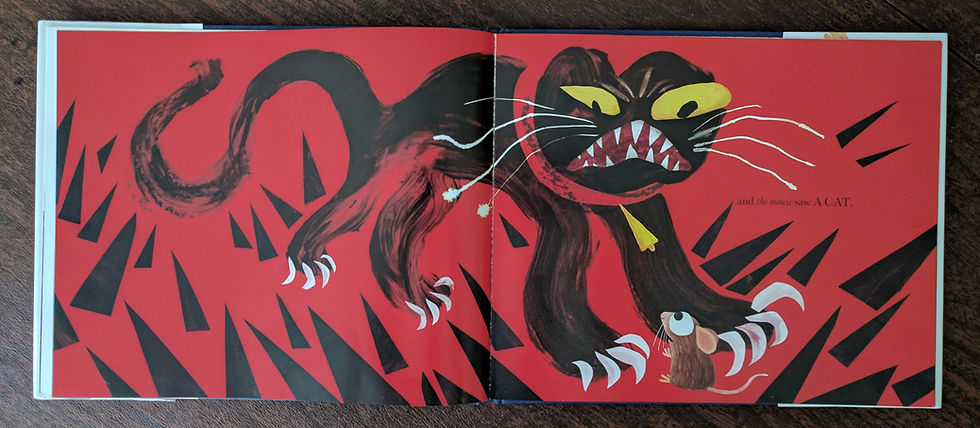I'm sure thousands of reviews and posts already exist about the amazing, 2017 Caldecott Honor book They All Saw a Cat, by Brendan Wenzel. I've read this book a few times already, and I just can't stop marveling at the simple brilliance of it.

The book is about perspective. In it, many different creatures see the same thing: a black cat. But it's the different ways in which they see this cat that provides thoughtful commentary on the human condition, one that I'm sure will not bypass even the youngest readers.
These two spreads show the starkest contrast, and stuck with me the most. They show how the same thing can look and feel benign and even comforting to one creature, yet evil to another.

and the child saw A CAT,

and the mouse saw A CAT.
Wenzel varies the perspective, color palette, and style of his art with each animal featured: a child, dog, fox, fish, mouse, snake, worm, etc. This gives the reader a first-hand experience of the cat from each creature's POV. Learning how to see things from another person's POV is the first step in becoming an empathetic individual.
There are even subtle word choices in this sparse text which drive this point further: Wenzel's choice of when to use the article "a" vs. "the" in describing the cat cannot be overlooked. Using the phrase "a cat" is common and impersonal, but writing "the cat" is specific to this particular creature and gives it an individuality.
The message, in addition to the mastery of the art and text, makes They All Saw A Cat a must-read. The book reminds me of a quote I keep seeing around the internet and which I found this week in poster form at my public library:

So if you're writing for children (and adults!), consider your word choices, consider your subject, and consider your message. It's absolutely important, and can be one of your most effective tools to enact change.